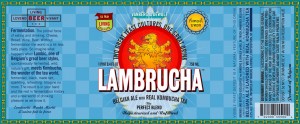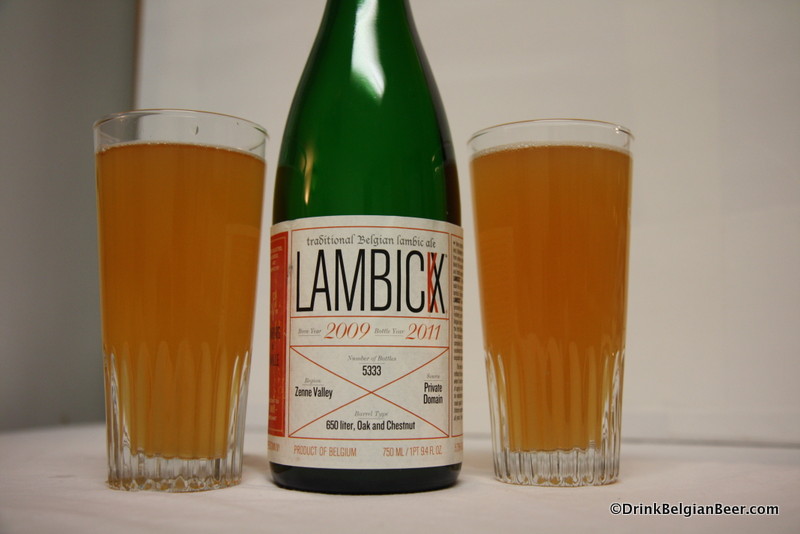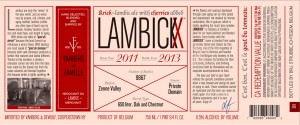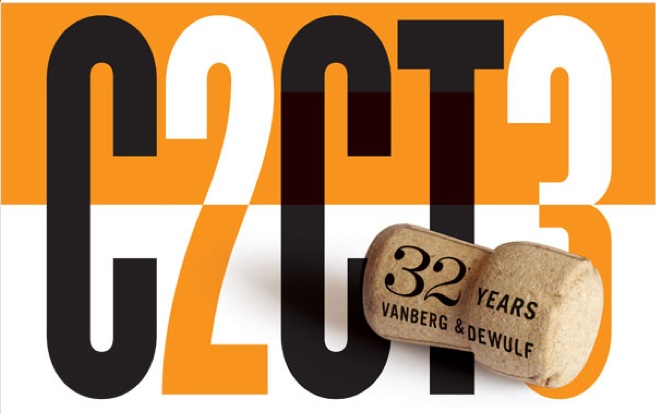
The unique Lambrucha, a blend of Kombucha tea and Lambic, arrived in 2010. LambickX, a blend of lambics hand selected by Feinberg, first hit American shores in Fall 2011.

Feinberg gave me some background on his LambickX project: “LambickX is my attempt to bottle a lambic with as close to a ‘from the cask’ flavor profile as possible. I love tasting straight lambics right from the barrels at breweries and blenderies in the Payottenland, and I know you do as well, Chuck. A lot of people who have not had the opportunity to taste these brews in that format don’t realize that they are very low in carbonation, and that many are very soft beers, refreshing beers, with low acidity. In fact, acidity and sourness do not necessarily equal authenticity in a lambic beer. These brews should be very drinkable. They are very dry beers with very little residual sugars remaining, which makes them very refreshing.”
Feinberg added: “We use lambic from Brouwerij De Troch that is a minimum of 18 months old, but typically is about 2 years old.”

As far as the new LambickX Kriek, Feinberg commented that it uses two-year old Kriekenlambic from Private Domains. “I hand-select all the barrels that I want lambic and kriek lambic from. Each year’s brewing season is different, and each barrel imparts it own unique character to the beer, and you can never replicate the same beer again. We call this ‘Gout du Tonneau’ as each cask-Tonneau in French-produces a lambic that matures and tastes different.”
A far as beer trends, Feinberg had this to say: “Sour beers are here to stay. It’s not a fad anymore. Wendy and I thought many years ago that sour beer would be a big trend in the future. Now, it’s here. These beers are very refreshing. They can be dry, crisp, and tart. You can get complexity and drinkability from a beer that’s not so high in alcohol, and that also travels well.”
He added: “Craft beer and other artisanal drinks are not a fad. Neither are places like beer-centric restaurants where you can go and enjoy an artisanal food and beer experience, and the beer is as complex as wine.”
Feinberg added: “Places that know what they are doing and why, and present themselves as such, will be the places that beer loving consumers will continue to seek out.”
As far as what he’d like to see in the future, Feinberg said forcefully: “Mark my words right now, Chuck. If you can’t smell a beer, you can’t taste it. What should happen….no, what must happen, is for beer to be served in large glasses with small portions. I mean, for example, an 18-ounce glass with five ounces of beer. Because you have to be able to smell a beer to really taste it. Let me give you an example. With a full pint glass, you are missing 70 to 75% of the flavor experience.”
You heard it first here.
The next question is one that I have heard from colleagues and friends stateside, and further afield. With so many breweries worldwide, especially in places like the U.S., Italy and Canada, making a lot of worthy Belgian-style beers, why is Belgian beer still relevant?
Feinberg’s response: “History! Belgian brewers set a precedent in style and culture that inspired a movement of greater appreciation and defter production methods for beer than ever before. Belgians cared about their beers; the production and the presentation, and in so doing, helped develop an appreciation and consideration that beers could be enjoyed like wine, with food.”


Leave a Reply